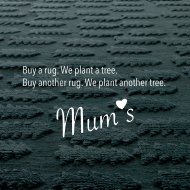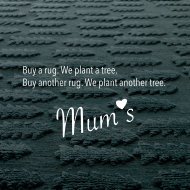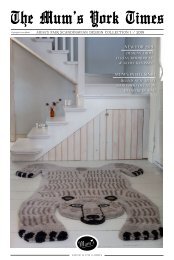MUMs collection 2020. Since 2006. Fair & lovable.
Mum's new collection presented at Stockholm Furniture & Light Fair 2020, Booth B01:01
Mum's new collection presented at Stockholm Furniture & Light Fair 2020, Booth B01:01
You also want an ePaper? Increase the reach of your titles
YUMPU automatically turns print PDFs into web optimized ePapers that Google loves.
STORY TIME / MATERIALS / GANASSIN / MOORHOUSE / NILSSON / ROPE / HALONEN / TUOM
THE JOURNEY OF WOOL AND
THE RUG BORN FROM IT
0
1
0
%
F
A
I
R
By Hanna Suominen & Outi Puro
Photos Markus Vikainen, Stone Films
In spring 2019 Outi,
mum of Mum’s travelled
to meet the artisans in
Northern India. She was
accompanied by a filming
crew, who is making a
document of MUM’s
sustainable way of making
things.
Far in the countryside
a bumpy road leads to a
village where MUM’s
artisans live and work
from home. Main idea
for Mum’s is to employ
artisans close to their
home. Textiles are woven
by both women and men,
with time consuming, age
old, traditional handicraft
techniques. While adults
weave Mum’s textiles kids
may be kids: play, and go to
school.
Wool for our rugs does
not travel on trucks but on
bicycles. Material, weather
it is wool or recycled cotton
is always local and sourced
from local shepherds. We
could name our sheep if
we wanted to, but instead
every artisan signatures our
rugs made of local wool.
Sheep are sheared by
hand. It is time consuming,
not firstly “efficient-kind-ofbusiness”,
but slow, takes
time and is costly. But we
want to stick with the values
rather than a lot of profit.
Mum’s is kind for animals
too. Absolutely no mulesing
technique is allowed. It is
painful and harmful for the
animal. Efficient though,
but we work in different,
softer and kinder way.
The families living in
the village gather into the
separate building to weave
the rugs. Home waits only
a few meters from their
workshop. This allows the
families to be together, save
in travel costs to work,
and also take care of their
families while working –
this gives a touch of love
into Mum’s textiles, we
think.
The hand craft skills
used to weave the rugs
are inherited from the
ancestors and some of the
looms are up to 300 years
old. After a rug is woven
it is then washed carefully.
Textiles gather fine fine
dust while weaving and
during the transportation
with bicycles. The men
in the village pour water
on the rug and wash it.
Textiles need a sunny day
to dry, as sunlight is so
strong it completely dries
heavy textiles in one day.
Sometimes, if there is no
sun our freight leaves later
than expected, as we cannot
pack moist wool. It would
be damaged on the way to
Finland, home of Mum’s.
In that case we just need
to wait for a sunny day to
come.
Mum’s works in a
fair and visible way. And
just as a mention, we are
printed in a college book
as an example of ethical
design since 2006. We still
have the same values as in
the beginning. That’s our
secret, that’s our heart.
MUM’S FAMILY
In India we drive for
two hours from Varanasi.
We have Atif with us. Atif
is Outi’s main collaborator
in India, the person who
handles all communication,
sampling, quality control,
payments, hands out
the work, visits artisans
every week, takes care of
everything. Atif is Mum’s
treasure. We are on our
way to a small village
where our artisans live.
It is a community, where
SEE A VIDEO OF
OUTI'S TRIP ON
OUR BLOG:
40
In India's rural villages, it is usually the
men who weave rugs when women take
care of children. Women help by doing
finishing steps of the rug making process
for example. This is possible, when work
is close to home and families can share
work and childcare responsibilities.
















